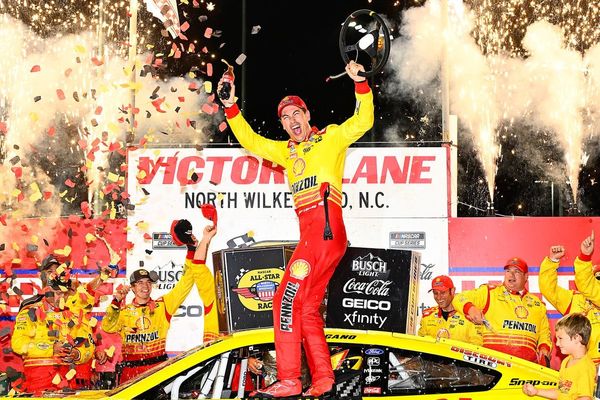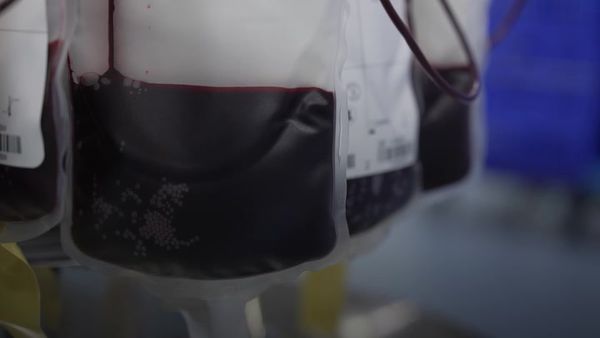
The most surprising thing about the reissue of Let It Be is that it commences with footage shot not in 1969 but last year: an interview between Peter Jackson and the film’s director, Michael Lindsay-Hogg. If nothing else, this suggests that Lindsay-Hogg is a good sport, given that Jackson’s eight-hour 2021 docuseries The Beatles: Get Back substantially retold the version of events depicted in Lindsay-Hogg’s film about the Beatles’ 1969 recording sessions at Twickenham Studios and in the basement of their Apple HQ.
Furthermore, Get Back made Lindsay-Hogg himself look like a bit of a ninny, ceaselessly cajoling the Beatles to perform a filmed live performance in an amphitheatre in Tripoli – “Torchlit! In front of 2,000 Arabs!” – undaunted by various Beatles telling him to stick his idea, and indeed the Beatles apparently splitting up in front of him: his reaction to George Harrison quitting the band midway through filming was to recommence badgering a shattered and tearful-looking Paul McCartney about the amphitheatre gig. No wonder Jackson introduces him with the line: “I guess people might be asking themselves why you might be here talking to me.”
But he is, and delightfully, it’s not long before he’s returned to his favourite subject: 55 years later, he still seems to think the film’s biggest failing was its noticeable lack of torchlit Arabs. “2,000 people in an amphitheatre! People would have come across the desert!” he enthuses, then adds, sadly: “I almost had it, the amphitheatre.” He patently didn’t, but to his credit Peter Jackson nods sympathetically, which suggests he might be a good sport too.
You get the feeling that Lindsay-Hogg turned up in the hope of burnishing the reputation of Let It Be, a film that he says “didn’t get a fair shake” on release. None of the Beatles attended its premiere or the Oscars ceremony, where they won best original song score for the title track; all of them subsequently criticised the film in one way or another; the reviews largely stank; and it’s been legally unavailable for over 40 years.
But the restored version burnishes its reputation on its own. It’s certainly a flawed film, not least in the fact that it presents its footage entirely without context. It never explains what the Beatles were doing – rehearsing for a projected live special and being filmed for an accompanying behind-the-scenes documentary – which amps up the sense of aimlessness that haunts the Twickenham sessions. Nor does it explain why the action suddenly moves from Twickenham to Apple HQ and the mood distinctly lifts (partly because the idea of the TV special and the torchlit Arabs have been permanently nixed as a condition of Harrison returning; partly because of the presence of ancillary keyboard player Billy Preston, an old friend from their Hamburg days in whose company the Beatles felt obliged to play nice).
Yet it’s nowhere near as bad as its myth suggests. There are some fantastic moments – Lennon and McCartney giggling as they harmonise on Two Of Us; Ringo’s slapstick expression of shock when McCartney’s young stepdaughter Heather hits one of his drums; the band clearly enjoying a rough-edged jam through the old rock’n’roll standards Rip It Up and Shake, Rattle and Roll; the footage of the concert on the roof of Apple HQ – and some strikingly insightful ones: there’s a distinctly frosty atmosphere when McCartney cheerleads a visibly unimpressed Lennon and Harrison through a version of Maxwell’s Silver Hammer, a song he mock-apologetically introduces as “corny”.
Nor is Let It Be anything like as depressing as it’s supposed to be. In truth, its overall tone doesn’t seem that different from the ostensibly happier or more rounded Get Back: a handful of arguments and moments of froideur interspersed with clowning for the camera. There’s certainly a bit less of the latter here than in Jackson’s version, but that has the effect of making said clowning seem less forced. If George Harrison’s general mood seems to be summed up by the baleful strains of his song I Me Mine (“I don’t give a fuck if you include it,” he shrugs to Lindsay-Hogg as he performs it for the first time), then said mood is punctured by Lennon and Yoko Ono waltzing around the studio as it plays, something they clearly did too spontaneously for Lindsay-Hogg’s cameras to catch it properly: the footage is largely out of focus.
Indeed, you could argue that Lindsay-Hogg rather pulled his punches, or had his punches pulled for him – by his account, Let It Be was an hour longer before the Beatles saw it and demanded cuts. You see the argument between McCartney and Harrison, but not the latter walking out, nor do you hear McCartney and Lennon’s covertly taped discussion about replacing him with Eric Clapton. Also missing is the moment from Get Back where producer Glyn Johns fruitlessly attempts to dissuade John Lennon from getting involved with Allen Klein, a crook whose takeover bid for the post of Beatles’ manager undoubtedly hastened the band’s split.
It doubtless all seemed a lot more miserable to viewers in 1970, with the news that the Beatles had split up – announced a month before the film premiered – still ringing in their ears, and the footage onscreen far more grainy, grim and grimy-looking than it is today: the original film was blown up from 16mm to 35mm for theatrical release, affecting the picture quality – a situation that’s been rectified in restoration. Perhaps an audience reeling from the Beatles’ breakup and a band in turmoil wasn’t the best judges of Let It Be’s quality – neither an overlooked masterpiece nor the disaster the Beatles and the critics thought, it’s finally getting a fair shake.
• This article was amended on 8 May 2024. Let It Be won the Oscar for best original song score, not “best original song” as an earlier version said.







